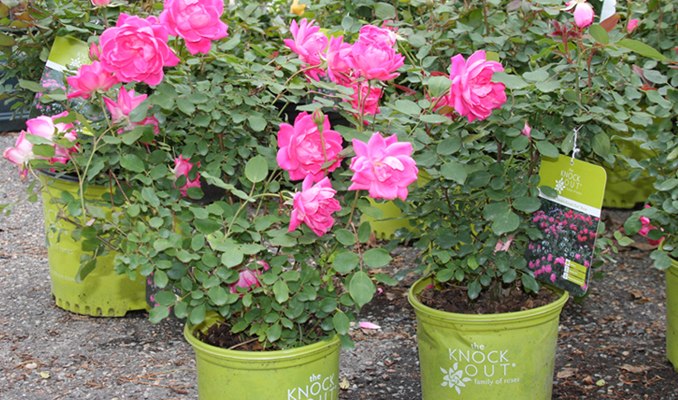A Valentine’s Day Favorite Let’s Talk Roses!!
With Valentine’s Day around the corner it seems like this time of year we always get allot of interest from clients about Roses. Questions like, “I have always loved Roses, how hard are they to grow?” or “Do I have to do any special to have nice Roses” and “Will Roses grow on my patio?”. With those types of calls and e-mails already starting to come in this year I decided to go ahead provide you some information to address Planting Roses!
When you buy a rose plant it very possibly can have short, leafless canes and, sometimes even, bare roots. Seeing a plant like this can leave you wondering how do you plant roses. Roses are not nearly as fragile as you might think and you could probably just plant it in a hole and have some success. But some extra effort when planting roses will pay off with healthier plants and more blooms. Here are a few tips for how to plant roses.
Where to Plant Roses
Choose a site with full sun to partial shade. Six hours or more of sun is preferred. There are some roses that will be perfectly happy in partial shade, but most roses bloom their best if they are in a spot that gets sun all day. The exception to this rule of thumb would be when roses are grown in areas with extremely hot growing seasons and limited water. In that case, you roses will appreciate the relief offered by some afternoon shade.
Roses are not terribly sensitive regarding soil, but since they are heavy feeders, a rich loam or soil mix would be ideal. The soil pH can be slightly acidic to neutral (5.5 to 7.0). It is usually advisable to work in several inches of organic matter, especially if you have poor soil or heavy clay, which chances are you do!
Make sure the soil has good drainage. Roses need regular deep watering, but their roots will rot if left to sit for days in wet soil. As will most plants.
And finally, do not crowd your rose bushes. The more air flow around the plants, the less likely they will be to get fungal diseases, like black spot and powdery mildew, on their leaves.
How to Plant Roses
Dig out a hole that is slightly wider, but about as deep as the roses root ball. This will generally be about 15–18 inches deep x 18–24 inches wide or so.
Mix a handful of bone meal or superphosphate into the soil you removed from the hole and save it for refilling the hole, once the rose is planted.. This will help the rose bush acclimate to its new soil. Don’t feed with anything else at planting time. You want the roots to take hold, before the top starts sending out a lot of new growth.
If your rose came in a container, gently remove it from the pot and loosen the roots a bit.
If your rose is bare root, soak the roots for a few hours, before planting.
Make a mound in the center of the hole, with the soil and superphosphate mix. Make the mound high enough so that when you place the rose bush on top of it, the knobby graft union is barely below soil level. When the plant settles, the graft union should be fully buried, about 1-2 inches underground.
Gardeners in warm climates may prefer to leave the bud union above ground, since there is little chance of frost damage. You can bury the graft no matter where you are gardening, but there is a chance that sprouts will from the root stock, resulting in a plant different from the one grafted on top.
Spread the roots down the sides of the mound. Begin filling in with the soil and superphosphate, keeping the roots as spread as possible. Water the soil when the hole is just about filled, to help settle it in. Continue filling the hole and gently pat down.
Water deeply and apply 1–2 inches of mulch. Water at least once per week.
More Tips:
If there is still a chance of freezing temps, you can loosely pile soil or mulch around the base of the rose canes, to keep them from drying out. Remove this soil when the temperatures warm.
Prune back the canes of larger rose bushes that are being transplanted to about 6–8 inches long
Caring for Roses after Installing
Continue to water every week, so that the plants develop a deep roots system.
Feed roses when they start to leaf out in spring and after each flush of bloom or about every six weeks throughout the growing season.
Stop feeding about 6 weeks before your first frost date, but continue watering.
Until next time Happy Gardening!!
Jimmie
